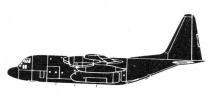Incident Overview

Description
The approach to runway 27 at Bremen Airport, Germany was abandoned and the aircraft overshot. When making a turn at low altitude, the aircraft stalled with a pitch of about 30-60ø and crashed left wing first. The stall was probably induced by wrong activation of the controls. Such activation was possibly caused by a sudden occurrence of physical disorder of one of the pilots. PROBABLE CAUSE: “The overshoot on approach to land was probably caused by the fact that – possibly on account of a malfunction of one of the flight director instruments -the pilot was not in a position to remain on the glide path and that he made a wrong assessment of the height above the ground after transition to visual flight. The stall was probably induced by wrong activation of controls. Such activation was possibly caused by sudden occurrence of a physical disorder of one of the pilots. After the aircraft had stalled, the pilot could not control the further progress of the flight on account of the rather poor stall performance of the aircraft type, the extraordinary difficulties to control a stall during instrument flight conditions, and the insufficient height available for transition from a stall to a normal attitude after the aircraft had sheared off. Other factors may have contributed to the accident.”
Source of Information
https://www.filmothek.bundesarchiv.de/video/584687https://www.filmothek.bundesarchiv.de/video/584687Primary Cause
Incorrect control activation, potentially due to a malfunctioning flight director instrument, resulting in a loss of glide path and subsequent stall.Incorrect control activation, potentially due to a malfunctioning flight director instrument, resulting in a loss of glide path and subsequent stall.Share on:





